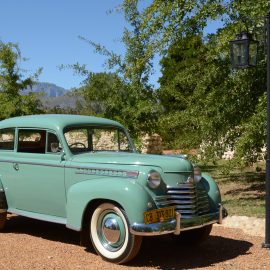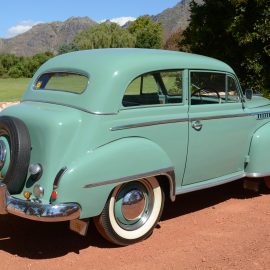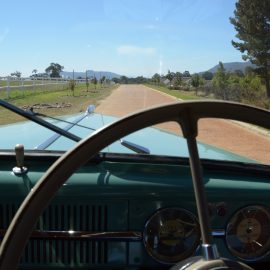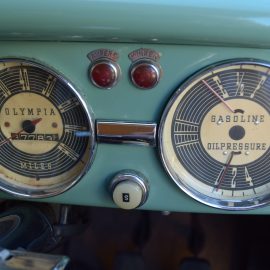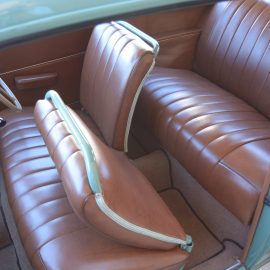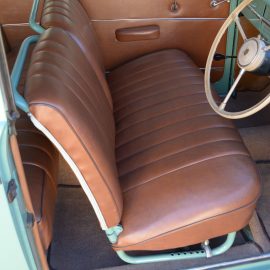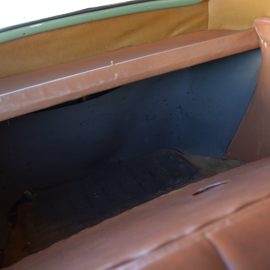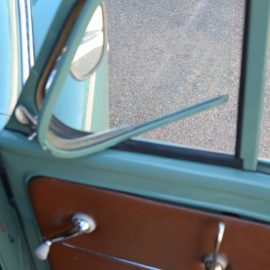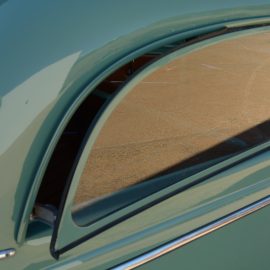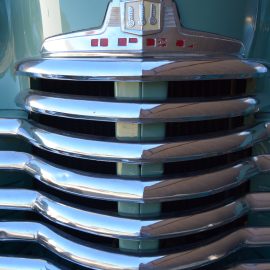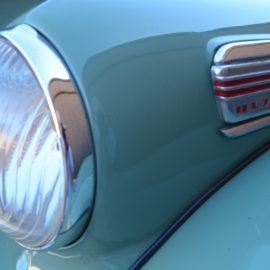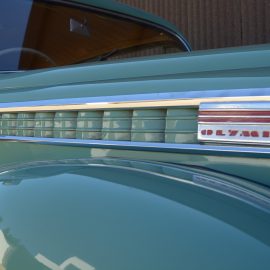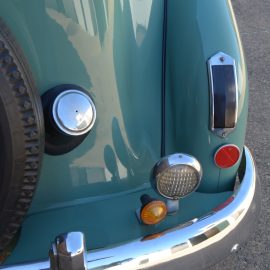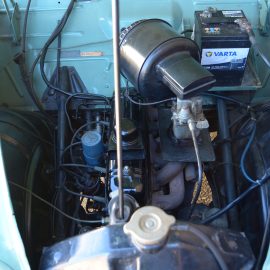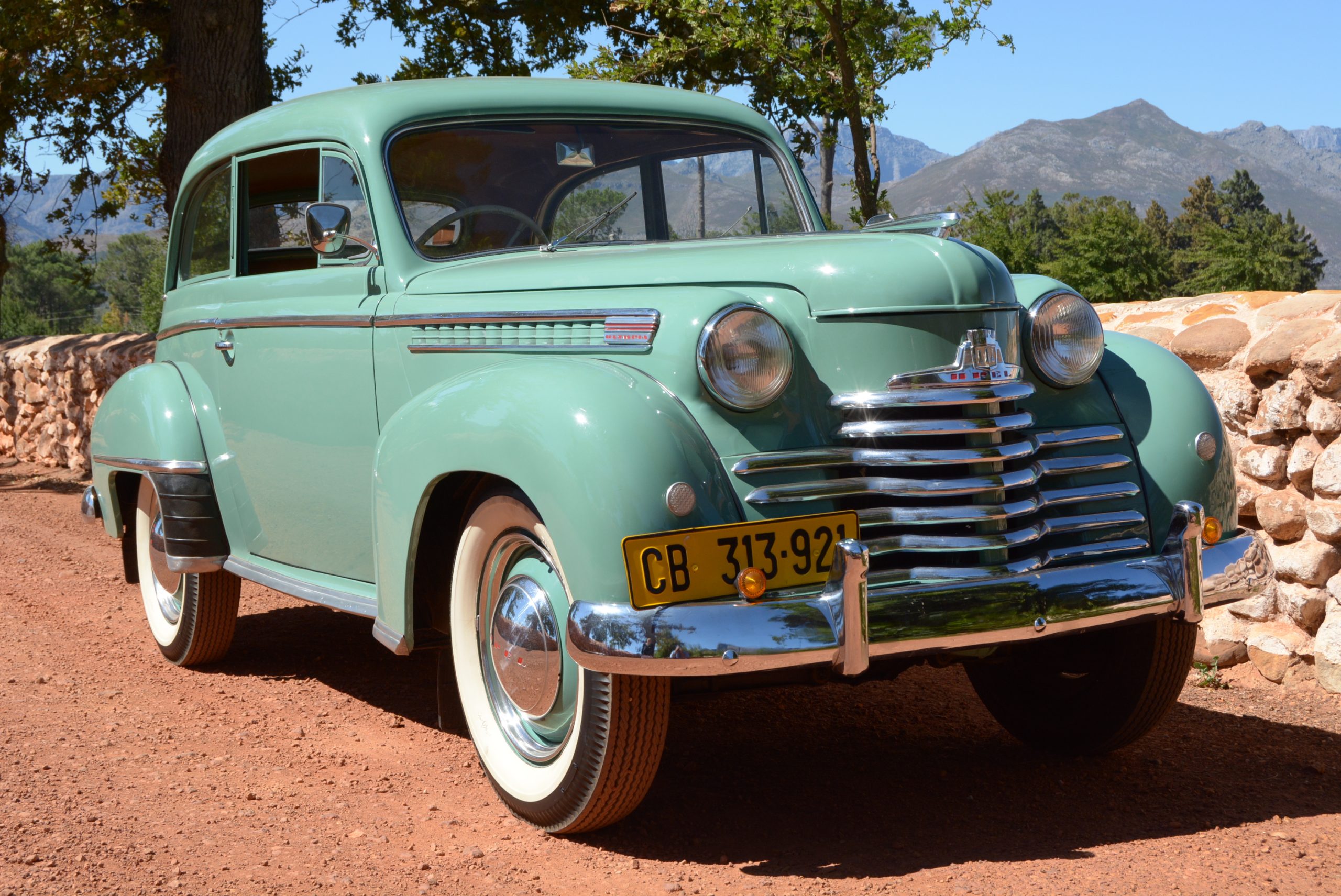
31 May Collection In Action: 1950 Opel Olympia
Mike Monk tells the story of an unsung hero, a little-known car that broke new ground in the German auto industry…
Stepping into any old automobile always creates an element of anticipation. How good is it? How easy to drive is it? Does it flatter to deceive? Is it better than it appears? No matter how old exactly, these are just some of the thoughts that pass through my mind when approaching a vehicle from the past – veteran, Edwardian, vintage, post-vintage thoroughbred, classic – that I am fortunate enough to be able to drive. Naturally, anything with a history that has gone down in the record books as significant heightens any expectations. But no matter what the vehicle’s provenance, there is always something to be learned from experiencing a car from the past, from the earliest horseless carriages to modern day classics. In some instances they represent milestones in a motor manufacturer’s progress, forming part of its DNA not always recognised at the time but apparent today. Like the Opel Olympia…
In 1935 – four years after General Motors assumed total control of the company – Opel introduced the first-generation Olympia, named in anticipation of the 1936 Olympic Games to be held in Berlin. Launched at the Berlin Motor Show, it was a ground-breaker: Germany’s first mass-produced car with an all-steel unitary body. Manufacture at the Rüsselsheim site began later in the year and necessitated some new production methods, including spot welding, that were patented by Opel. Using advanced types of steel, the weight-saving monocoque construction resulted in the car being some 180 kg lighter than its predecessor. (As a brief aside, in 1935 Opel became the first manufacturer to build more than 100 000 vehicles in a single year.)
The compact, family-sized car – which was available in two body styles, an LZ two-door saloon and a CL two-door cabriolet – was powered by a 1,3-litre four-cylinder side-valve engine that produced 18 kW. Transmission was a three-speed manual and the car had a top speed of 95 km/h. Suspension was independent up front, with a live axle supported on semi-elliptic leaf springs at the rear. Production lasted until 1937, by which time a four-speed ’box had become available. A total of 81 661 units were produced.
The second-generation Olympia – designated OL38 – appeared in 1937 and was manufactured during both pre- and post-war periods. Completely redesigned, it was a bigger car all round than the outgoing model, measuring 4,05 metres long, 1,5 metres wide and 1,6 metres high, with a wheelbase of 2,4 metres. It weighed around 920 kg. An LV four-door saloon was added to the model line-up. The motor was all-new too, a 1488cc overhead-valve inline-four that developed 34 kW at 4 000 r/min and 97 N.m of torque at, unusually, the same revs. Compression ratio was a remarkably low 6,6:1. Opel reverted to a three-speed gearbox and top speed was raised to 112 km/h. The underpinnings, with drum brakes all round, were essentially a carryover.
Production came to a halt in late 1940 and during WWII the Rüsselsheim plant was severely damaged by Allied bomb attacks. After reconstruction, production of the essentially unchanged OL38 Olympia restarted in late 1947 but only of the two-door saloon, and by the end of 1949 a total of 25 952 had been produced. In 1950 the body was facelifted and the saloon was joined by a two-door cabriolet once more and, for the first time, a two-door station wagon.
FMM’s 1950 two-door sedan was built at GM’s plant in Port Elizabeth. It was previously part of the Bertie Bester collection and is thought to be one of only two still in the country – Olympias are not a familiar sight, even at overseas classic car shows. This car is in remarkably good condition, its glistening green paintwork and bold, upright stance lending it a period elegance that is all the more becoming because of its rarity. A bold grille, set-back and with faired-in headlamps, bonnet-side louvres, stylish strips of chrome trim and white-wall tyres are just some of the body’s stylish features. Admittedly, the truncated tail with its exposed spare wheel does look a little at odds with the Olympia’s otherwise flattering looks, but from any angle it catches the eye.
Inside it is no less appealing. The front seat has leather-upholstered cushions and squabs on an otherwise minimalist framework that offers adjustment from barely enough to practically nil. The split backrest allows entry to the rear, but the limited rearwards movement does provide some reasonable legroom for rear-seat passengers. The car’s only real downside is if you have to carry goods, in which case the rear seat backrest has to be pulled forward to access the boot as there is no exterior opening. For the driver, the painted metal dashboard houses two big dials for speed and fuel/oil pressure, trendy white knobs, warning lights for amps and ‘winkers’, and the ignition switch.
Ah, starting the car was a mystery at first until a button in the passenger side footwell (similar to, but larger than, the one on the driver’s side for dipping the headlamps), was depressed to bring the engine into life. Engage first with the column-shifter, release the stout handbrake under the dash to the right, and away we go. The engine is surprisingly willing given its modest power output, while the gearbox proves to be an absolute delight, with second an elastic ‘do anything’ ratio from walking pace up to near cruising speed. The top two ratios boast synchromesh and the shifter moves with surprising precision, helped by a comfortable clutch action.
A hard shove on the middle pedal brought about reassuring stopping power. Tired dampers helped provide a slightly floaty ride, while the big, thin-rimmed three-spoke steering wheel required only modest muscular input at slow turning speeds. Otherwise, cruising along, the Olympia surprised with its quiet, stable gait, excellent view out and even a bit of bling with its chromed pointed bonnet mascot pointing the way ahead.
Around 160 000 OL38 Olympias – still with the 1,5-litre motor introduced in 1937 – were sold before it was replaced by the more modern Opel Olympia Rekord in 1953, which was the precursor to the 1957 Opel Rekord. The Olympia name was used in 1967-1970 for a luxury version of the Opel Kadett, but it was the first- and second-generation models that had the most impact, especially as the original set a new German motor industry standard. The model’s popularity and reputation did much to help Opel re-establish itself after the war, and stands proud as an unsung hero in the company’s history.
FMM’s 1950 Opel Olympia is currently on view in Hall C.




